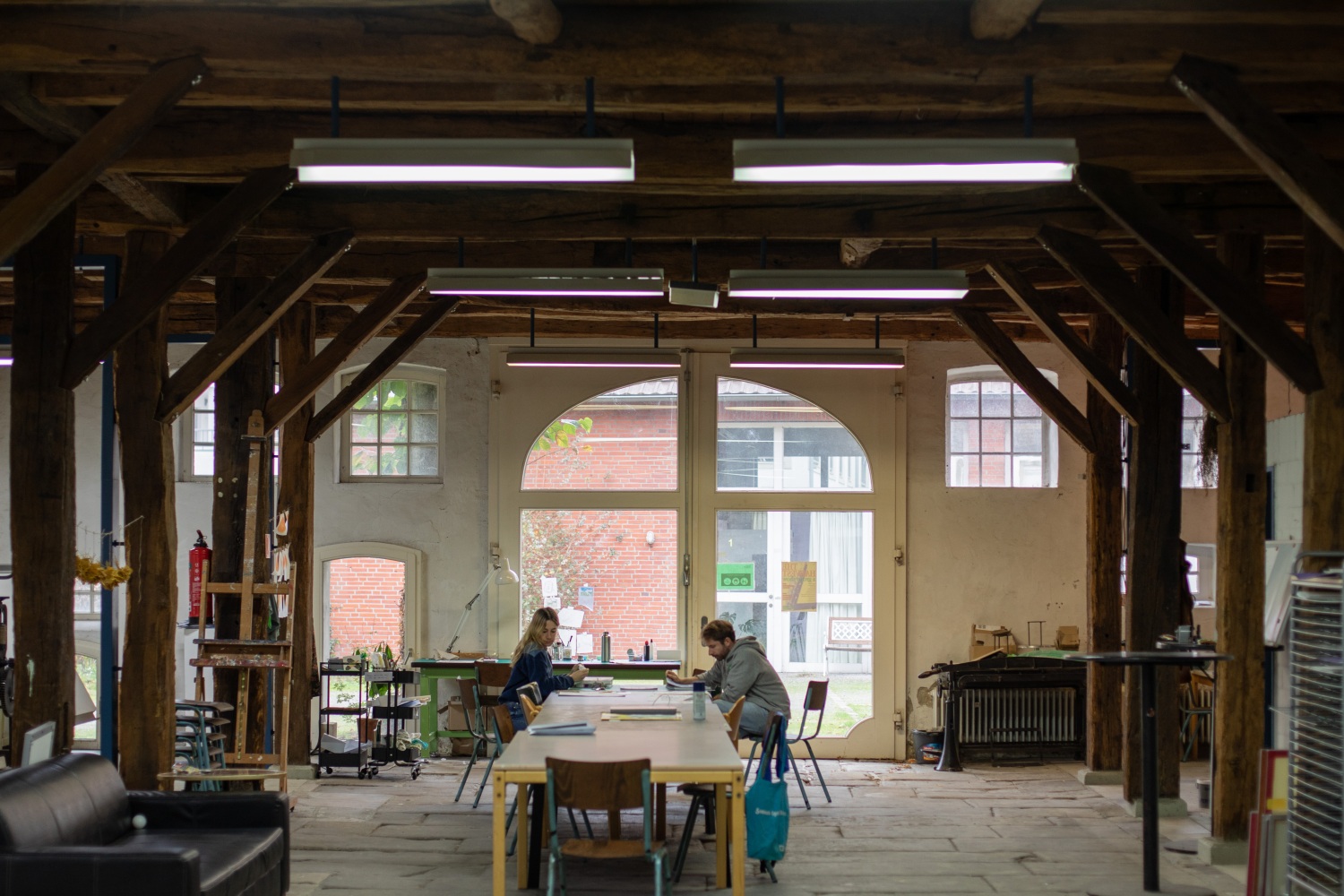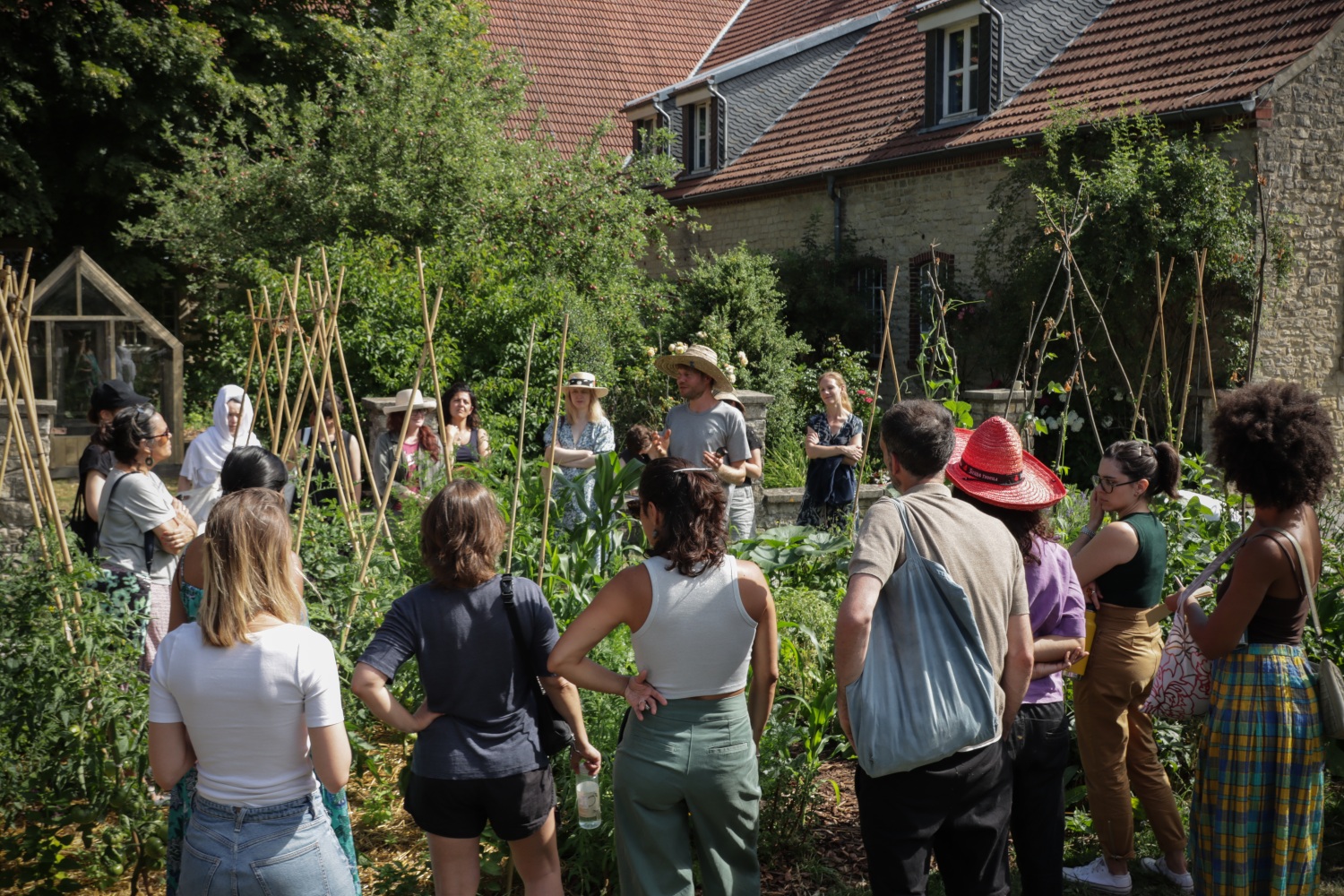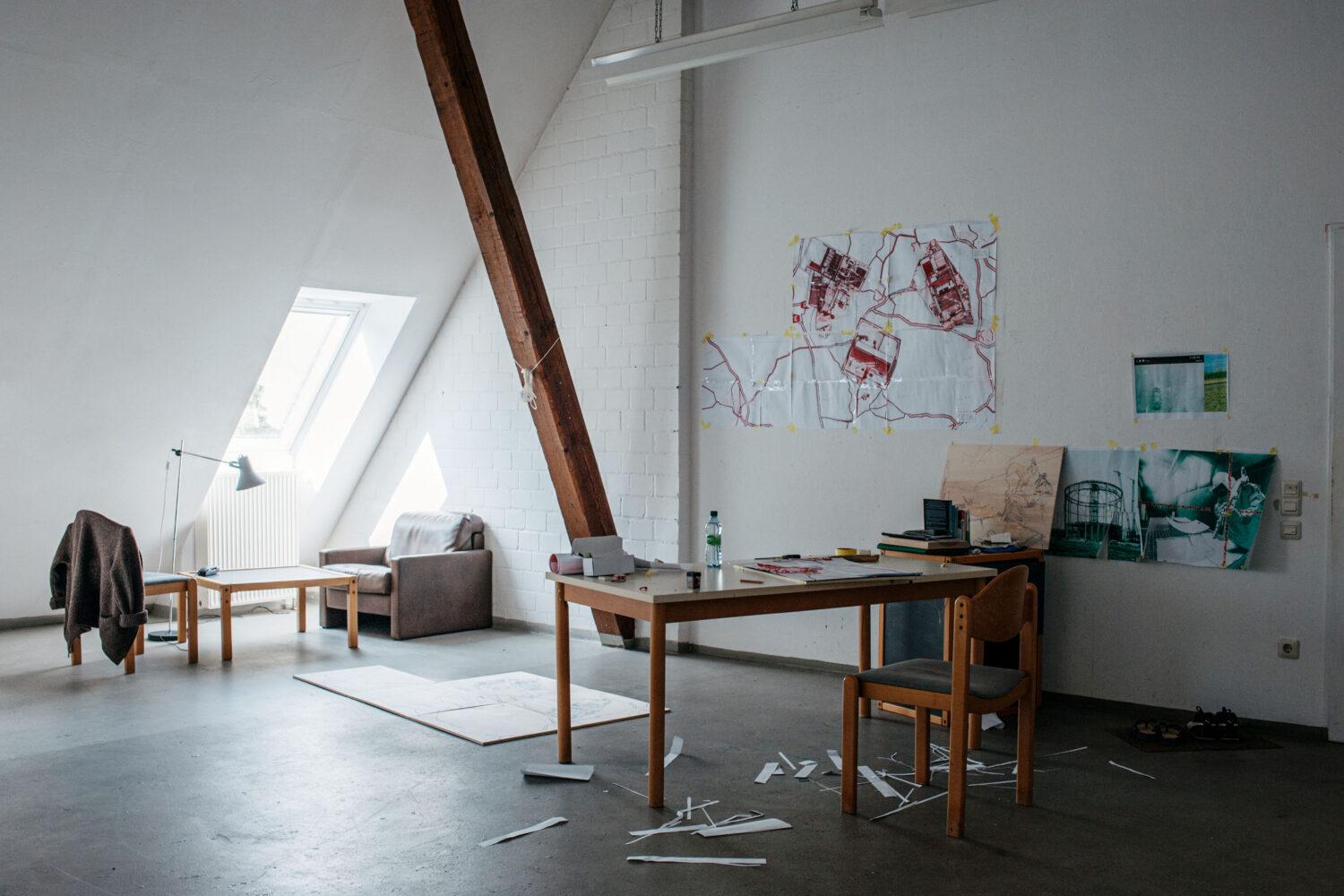
Stiftung Künstler*dorf Schöppingen is housed in two listed manor houses from the early 19th century. A total of six apartments for authors, six residential studios for visual artists and two larger residential units with several bedrooms are available. The Künstler*dorf also has event rooms, an exhibition hall, a gallery, a small cinema, a library as well as a workshop and a garden.
We view our spaces as social spaces in continuous transformation. Each social space is related to ideas, techniques, materials and practices linked to the work of our fellows and their projects. All of them are open to the local community through workshop, concerts, readings, exhibitions, meetings, and gatherings with fellows.


WORKSHOP
[Materials Social Space]
Wood, metal, clay, concrete, silkscreen printing, photo lab, sculpture, engraving, and so on. In the workshops we think hands on!

GARDEN
[Greeen social space]
Eat, create, reflect and heal from the seeds we sow and the fruits we harvest. The garden is a laboratory for creation, reflection and well-being.

LIBRARY
[Poetical and Theoretical social space]
Our idea is to create a social space that, from the field of literature, allows us to promote new poetic, theoretical and even graphic and plastic approaches to writing.

GALLERY
[Transdisciplinary and media social space]
In the future we see this space as a transmedia space, right now it’s amazing for photography, performance, small concerts and even an opera.

EXHIBITION HALL
[Exhibition social space]
High ceilings, large entrances of light, two rooms. For 33 years this has been the space for exhibiting all kinds of individual and collective artistic projects in the Künstlerdorf.

The Künstler*dorf becomes a home for temporary communities.








Environment
Schöppingen is located in the western Münsterland (North Rhine-Westphalia, Germany), close to the Dutch border. The cities of Münster and Enschede/NL are each half an hour’s drive away.
The Westmünsterland is predominantly flat and invites you to cycle along castles and park landscapes. While agricultural land still dominates the landscape today and the region was characterized by a monostructure just a few decades ago, economic development has progressed toward today’s broad mix of industries.
Not only the neighborhood to the Netherlands characterizes the cross-cultural setting of the place. The stationing of a NATO unit on the Schöppinger Berg gave Schöppingen a positive swing in the population curve from the 1960s to the 1980s. With the fall of the German-German border in 1989, the former barracks housed GDR repatriates and subsequently emigrants from the former Eastern Bloc countries in a supra-regional reception center. From 1992 to 2022, the barracks site was a central accommodation facility of the state of North Rhine-Westphalia for the initial reception of asylum seekers and war refugees.
With the establishment of the NATO barracks, a guidance base and a launching base for air defense missiles also went into operation in 1963. In the meantime, the Münster University of Applied Sciences has set up an antenna test site here. Radio amateurs use the site of the former fire control area, among other things, to participate in European and worldwide amateur radio competitions. Since 1992, the Schöppinger Berg has been dominated by a wind turbine.
Cultural attractions close to Schöppingen are the State Music Academy in Heek, the Center for Literature at Hülshoff Castle in Havixbeck and the Rock and Pop Museum in Gronau. The varied regional history becomes visible, for example, in the kult Westmünsterland in Vreden or in the LWL-Industriemuseum TextilWerk in Bocholt.